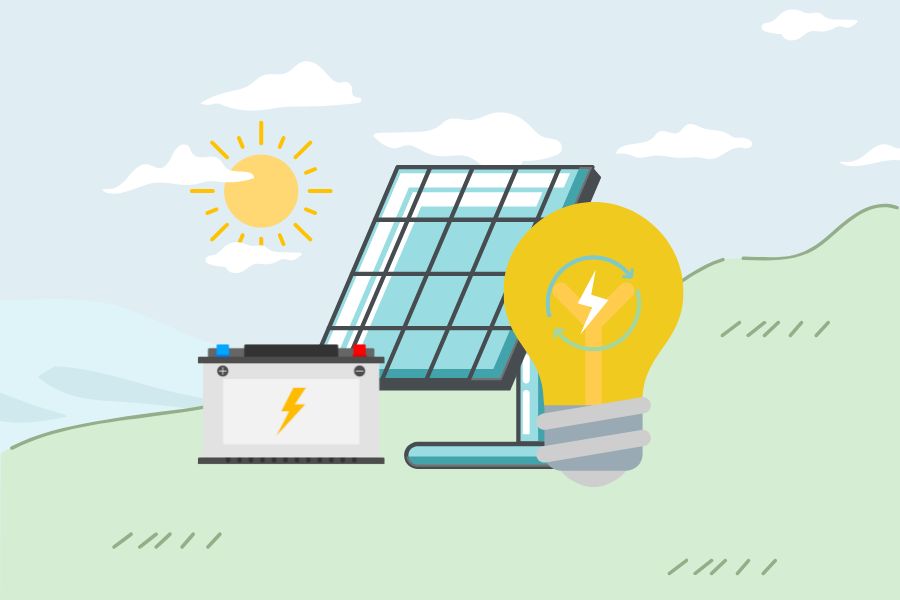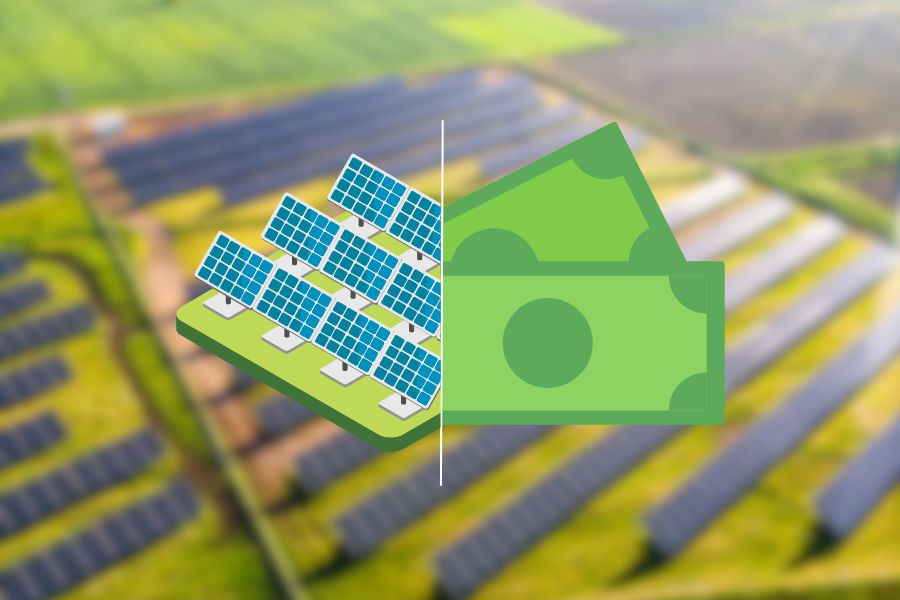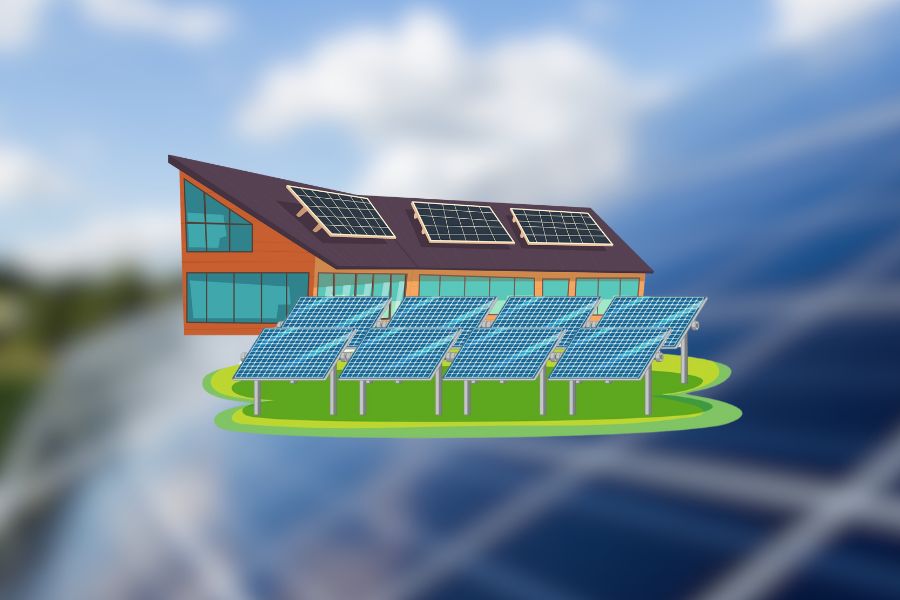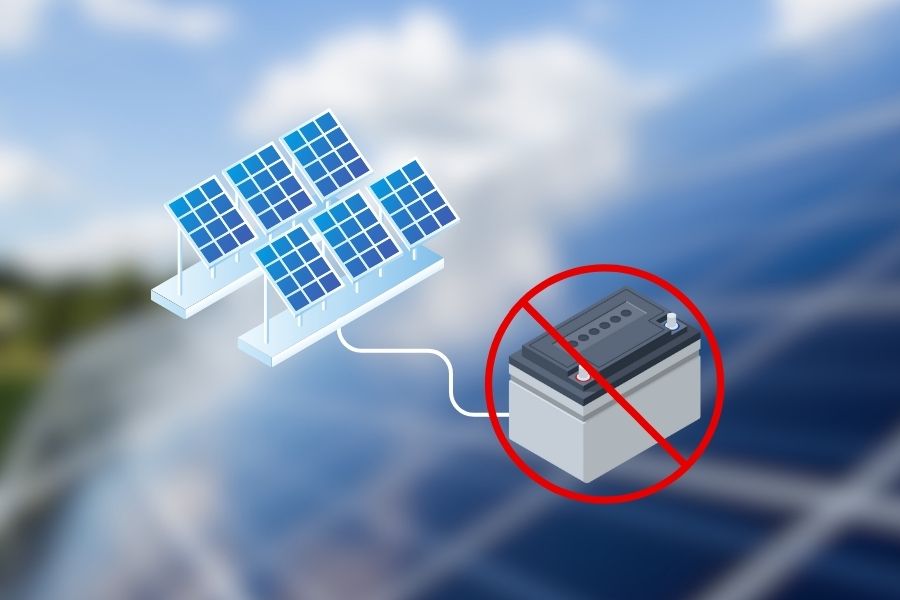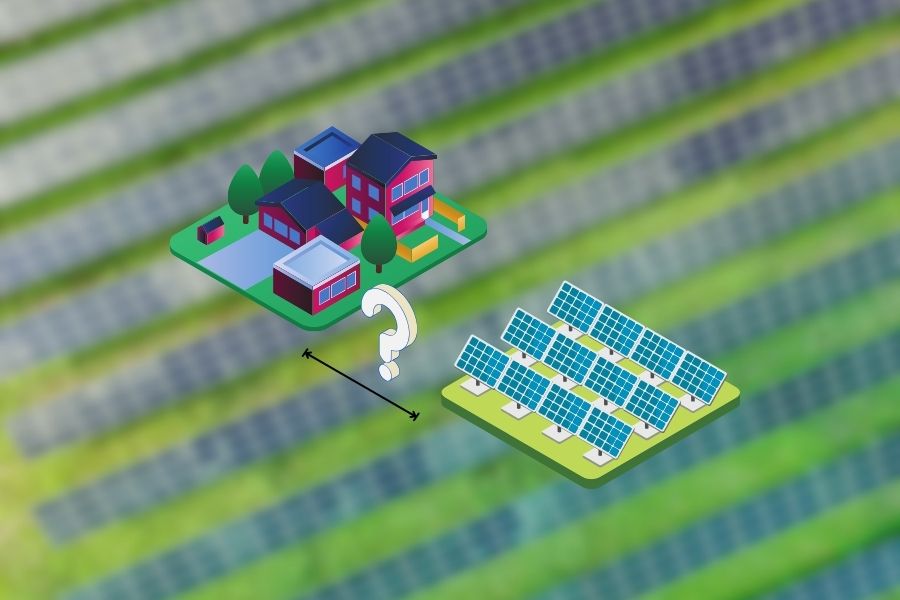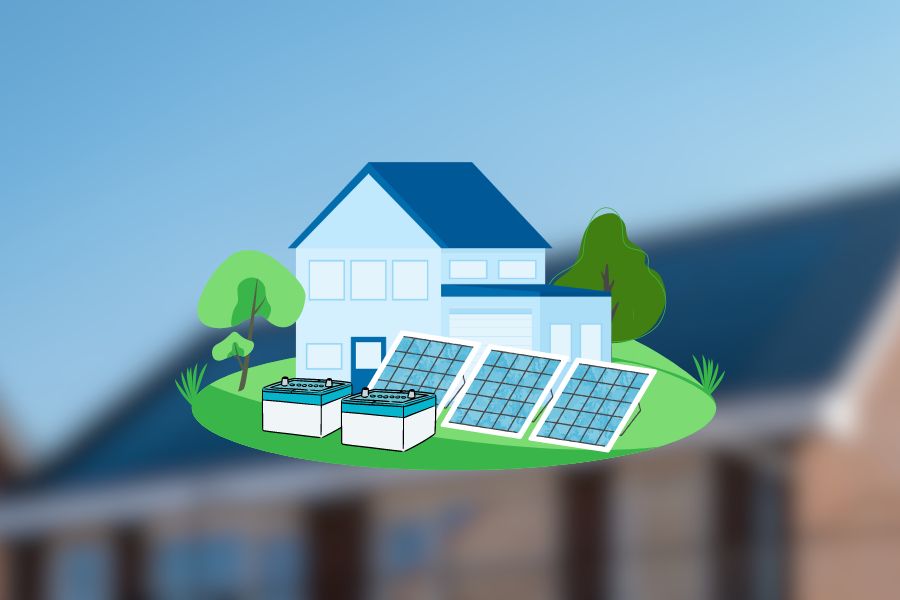Are you considering going green and installing solar panels on your home in Ireland? That’s awesome! But how many kWh does a solar panel produce in Ireland before you leap? The answer could be more straightforward, as it depends on several factors.
The location of your solar panel, the angle and orientation of the panel, and the local weather conditions all play a role in determining how much energy your solar panel will produce.
A solar panel in Ireland, influenced by various variables, including the country’s latitude, local climate, and the panel’s installation angle, can yield an average of 900 to 1,200 kWh annually.
This substantial energy production directly translates to a lower reliance on grid electricity and decreased utility bills. Furthermore, the improved efficiency and affordability of modern solar panels offer an attractive return on investment for Irish homeowners, fostering a greener and more sustainable energy landscape in the country.
What Factors Affect the Amount of Electricity Generated by Solar PV Systems?
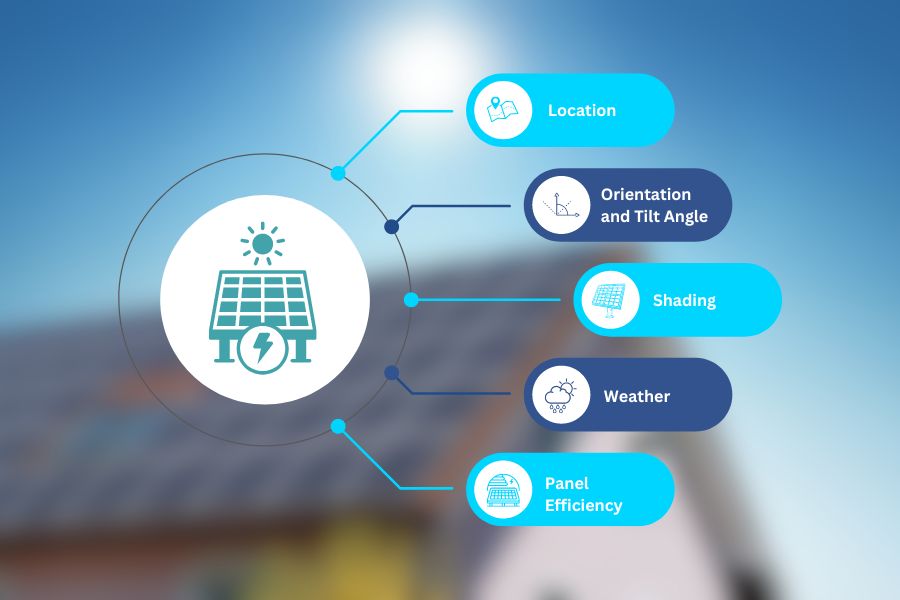
Understanding these factors can help you optimize the performance of your solar PV system and maximize the amount of electricity it produces. In this section, we’ll explore the factors that affect the amount of electricity generated by solar PV systems.
Location
The location of a solar system plays a crucial role in determining the amount of electricity it can generate. That is because solar panels need sunlight to generate electricity. It means that a location that receives much sun will produce more electricity than one with less sunlight.
In Ireland, the amount of sunlight varies depending on the time of year and the region. Generally, areas in the south and southeast of Ireland receive more sunlight than areas in the north and west.
Orientation and Tilt Angle
Solar panels’ orientation and tilt angle also impact the amount of electricity generated. Therefore, solar panels should ideally face south in Ireland to capture maximum sunlight.
However, east or west-facing panels can also work well if the roof is unsuitable for south-facing panels. Finally, one should consider the tilt angle of the panels. A 30 to 40 degree tilt angle is optimal for solar panels in Ireland.
Shading
Shading from nearby buildings, trees, or other obstructions can significantly impact the electricity generated by solar PV systems.
Even partial shading can cause a significant reduction in electricity production, so it’s essential to place solar panels in a location that receives minimal shading throughout the day.
Weather
Weather conditions such as cloud cover and temperature can also affect the amount of electricity generated by solar PV systems.
Cloud cover can significantly reduce the amount of sunlight that reaches the solar panels, while high temperatures can decrease the efficiency of solar cells.
Panel Efficiency
The solar panels’ efficiency is also a factor that affects the amount of electricity generated. Higher-efficiency panels can generate more electricity in the same amount of sunlight as lower-efficiency panels.
How Much Electricity Do Solar Panels Generate per Square Metre?
On average, a square meter of solar PV panels in a sunny area can generate between 150 to 300 watts of electricity under peak conditions. However, it’s essential to note that solar panels generate less electricity during cloudy or overcast weather, and their output reduces with time as they age.
Therefore, the best way to determine solar panels’ potential electricity generation is to consult a reputable installer.
How Much Electricity Do Solar Thermal Panels Generate in a Day?
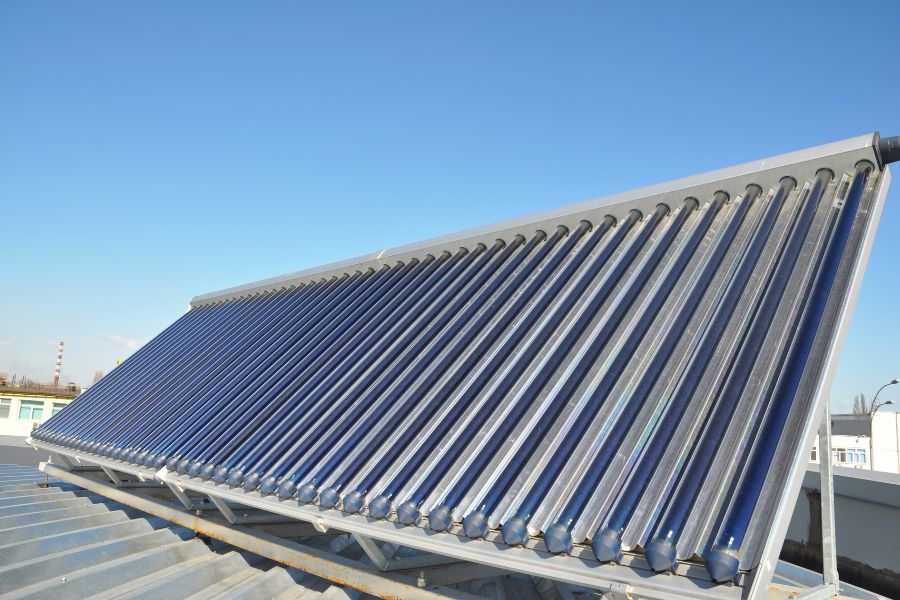
Solar thermal panels design generates hot water rather than electricity. Therefore, consider installing solar PV panels instead to generate electricity and reduce your electricity bills.
The amount of solar electricity that solar PV panels can generate in a day depends on several factors, including the size of the panel, the efficiency of the panel, and the amount of sunlight that the panel receives. On average, a 1kW solar PV panel system can generate around 4 kWh of electricity daily.
To determine how many solar panels you need to generate enough electricity to meet your needs, you will need to consider your average daily electricity consumption and the amount of sunlight that your location receives. A reputable solar panel installer can help you assess your energy needs and install solar panels tailored to your specific requirements.
In addition to generating solar electricity, consider a battery storage system to store excess electricity generated by your solar panels. It can help you to reduce your electricity bills further and become more self-sufficient in your energy usage.
How Much Electricity Do Solar Panels Produce in Winter?
The amount of electricity solar PV panels produce during winter can be affected by shorter daylight hours, lower sun angles, cloud cover, and snow cover.
During the winter season in Ireland, a solar PV system installed in a typical household with a size of 20 square meters, equivalent to approximately 3kW, can generate an estimated 2-3 kWh of electricity per day on average.
How Can You Generate 80% of Electricity from Solar PV Panels?
Again, how many kWh does a solar panel produce in Ireland? Generating 80% of electricity from solar PV panels can be achieved by implementing a few key strategies:
Install a Large Enough Solar PV System
The size of the solar PV system should produce at least 80% of the electricity demand. One can determine by analyzing the electricity consumption patterns of the household or business.
Optimize Solar Panel Placement and Angle
Proper placement and angle of the solar panels can maximize the sunlight they receive, significantly increasing their energy output. One can achieve this by installing the panels in an unobstructed location and at an optimal tilt angle.
Use High-efficiency Solar Panels
High-efficiency solar panels are more expensive than standard ones but can generate more electricity for the same surface area. It means fewer panels are needed to create the same amount of electricity, making the system more cost-effective in the long run.
Install Energy Storage
Energy storage systems, such as batteries, can store excess energy produced by solar panels during the day for use at night or during periods of low sunlight. That can increase the system’s overall energy efficiency and reduce dependence on the grid.
Optimize Energy Consumption
Reducing energy consumption can maximize the effectiveness of the solar PV system. For example, one can achieve this by implementing energy-efficient practices such as LED light bulbs. You can also turn off appliances or upgrade to energy-efficient ones when not in use.
How Can a Solar Energy System Lower Your Carbon Footprint?
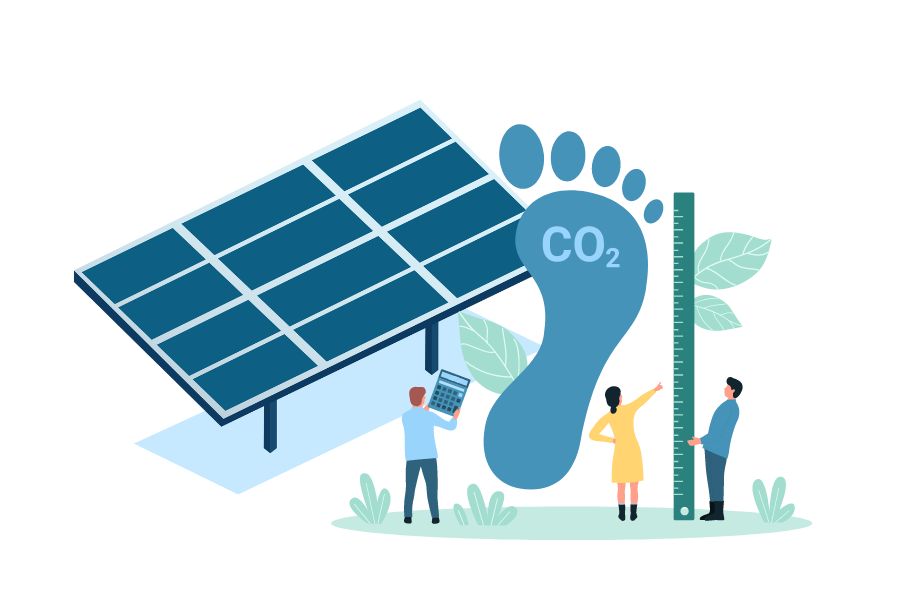
A solar energy system can significantly lower your carbon footprint by reducing your reliance on non-renewable sources such as coal, oil, and gas.
When you generate your electricity from solar power, you can reduce or even eliminate your consumption of fossil fuels, a significant contributor to greenhouse gas emissions and climate change.
You can also reduce the amount of electricity you need to purchase from the grid, which comes from fossil fuels, by installing a solar energy system. As a result, it helps to reduce the overall demand for non-renewable energy and promotes a shift towards a cleaner, more sustainable energy future.
How Are Solar Panels a Worthwhile Investment in Ireland?
Solar panels are a worthwhile investment in Ireland for several reasons. Firstly, Ireland has a moderate climate, with enough sunlight to generate significant amounts of electricity throughout the year.
Additionally, the Sustainable Energy Authority of Ireland (SEAI) offers generous grants and incentives for homeowners and businesses to install solar PV systems, making the initial cost of installation more affordable.
By generating your electricity from solar power, you can reduce your reliance on non-renewable sources and lower your carbon footprint.
Moreover, solar panels can increase the value of your property and provide a long-term return on investment through energy savings and potentially selling excess energy back to the grid.
Conclusion
Well, that’s a wrap on how many kWh a solar panel produces in Ireland! While the answer may vary depending on several factors, such as location, weather conditions, and the size and efficiency of the solar panel, it’s safe to say that solar energy is a pretty bright idea.
Not only can it help reduce your carbon footprint, but it can also save you some serious cash on your energy bills. So if you’re thinking about going solar, do your research, get some expert advice, and let the power of the sunshine on!
